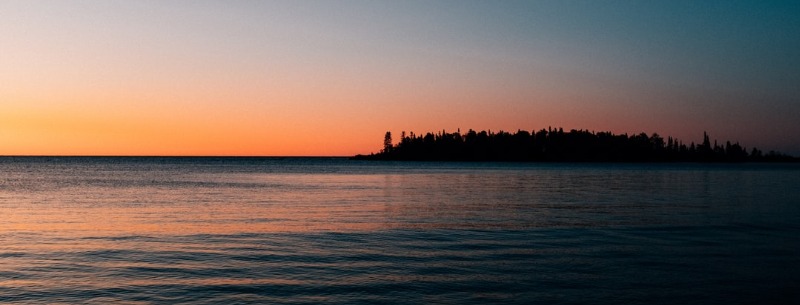Swept by tumultuous storms and traversed by fleets of oceangoing tankers, the interconnected Great Lakes form the largest body of freshwater in the world; Lake Superior alone is more than three hundred miles from east to west. Left untouched, the shores of these inland seas can rival any coastline: Superior and the northern reaches of Lake Michigan offer stunning rocky peninsulas, craggy cliffs, tree-covered islands, mammoth dunes, and deserted beaches. For lengthy stretches along Lake Erie, and the bottom lips of lakes Michigan and Huron, however, sluggish waters lap against large cities and the unused wharves of decaying ports.
To varying degrees, all the states that line the American side of the lakes – OHIO, MICHIGAN, INDIANA, ILLINOIS, WISCONSIN, and MINNESOTA – share this mixture of natural beauty and aging industry. Cities such as Chicago and Detroit, with all their good and bad points – and Chicago in particular, with its magnificent architecture, museums, music, and restaurants, is an unmissable destination – should not be seen as characterizing the entire region. Within the first hundred miles or so of the lakeshores, especially in Wisconsin and Minnesota, tens of thousands of smaller lakes and tumbling streams are scattered through a luxuriant rural wilderness; beyond that, you are soon in the heart of the Corn Belt, where you can drive for hours and encounter nothing more than a succession of crossroads communities, grain silos, and giant barns. Garrison Keillor’s wry stories about the fictional backwater town of Lake Wobegon (where “all the women are strong and all the men are beautiful”), set in Minnesota, carry more than a ring of truth.
The first foreigner to reach the Great Lakes, the French explorer Champlain in 1603, found the region inhabited mostly by tribes of Huron, Iroquois, and Algonquin. France soon established a network of military forts, Jesuit missions and fur-trading posts – which entailed treating the native people as allies rather than subjects. Territorial disputes with their colonial rivals, however, culminated in the French and Indian War with Britain from 1754 to 1761. The victorious British felt under no constraints to deal equitably with the Native Americans, and things grew worse with large-scale American settlement after independence. The Black Hawk War of 1832 put a bloody end to traditional life.
Settlers from the east were followed to Wisconsin and Minnesota by waves of Scandinavians and Germans , while the lower halves of Illinois and Indiana attracted Southerners , who attempted to maintain slavery and resisted Union conscription during the Civil War. These areas often still have more in common with neighboring Kentucky and Tennessee than with the industrial cities of their own states.
The impetus given to industry by the Civil War was encouraged by abundant supplies of ores and fuel and efficient transportation by water and rail. As lakeshore cities like Chicago, Detroit, and Cleveland grew, their populations swelled with hundreds of thousands of poor blacks who migrated from the Deep South in search of jobs. Many worked in munitions during the two world wars. But a lack of planning, inadequate housing and mass layoffs at times of low demand bred conditions that led to the riots of the late 1960s and current inner-city deprivation. Depression in the 1970s ravaged the economy – especially the automobile industry, on which so much else depended – and brought the unwanted title of ” Rust Belt “. Since then, urban centers have battled back, with Cleveland , Ohio, perhaps the most dramatic example of a turnaround in fortunes.
During the summer, breezes coming off the Great Lakes keep the temperature down to a comfortable average of 70°F, though heat waves can push temperatures over 100°F. Even in spring and fall, freezing occurs in the northern reaches of the region, where winter readings of -50°F are not uncommon and parts of the lakes are frozen solid.
Public transportation serves all the major towns. Amtrak ‘s national hub is in Chicago and its routes spread across the entire region; Greyhound operates reasonably frequent services to nearly all urban centers. The best way to appreciate the sculptured shorelines of the lakes themselves, however, is to travel the lonely minor roads by car . In the northwest, cycling alongside Superior and the northern parts of Lake Michigan can be quite enjoyable.
